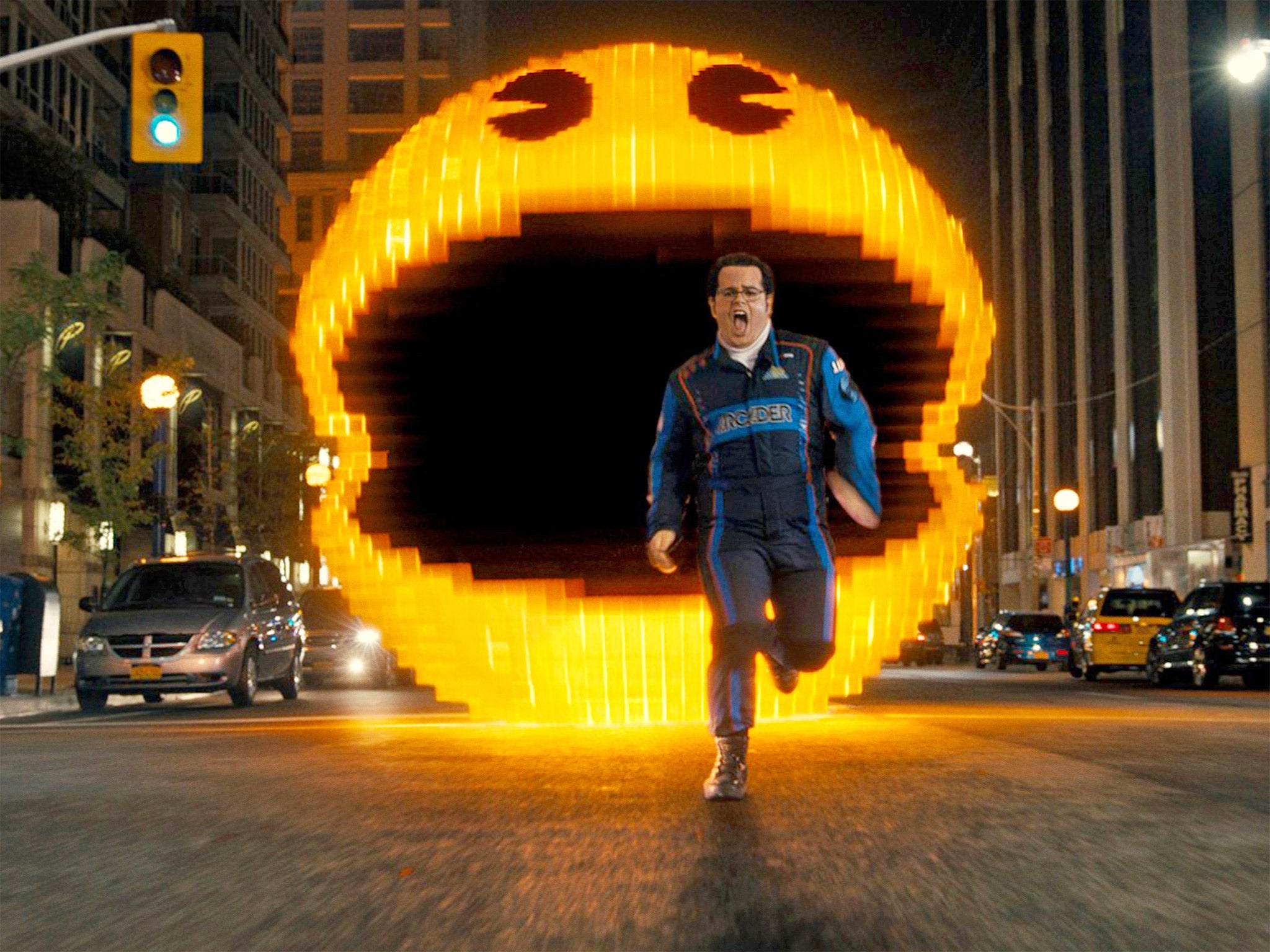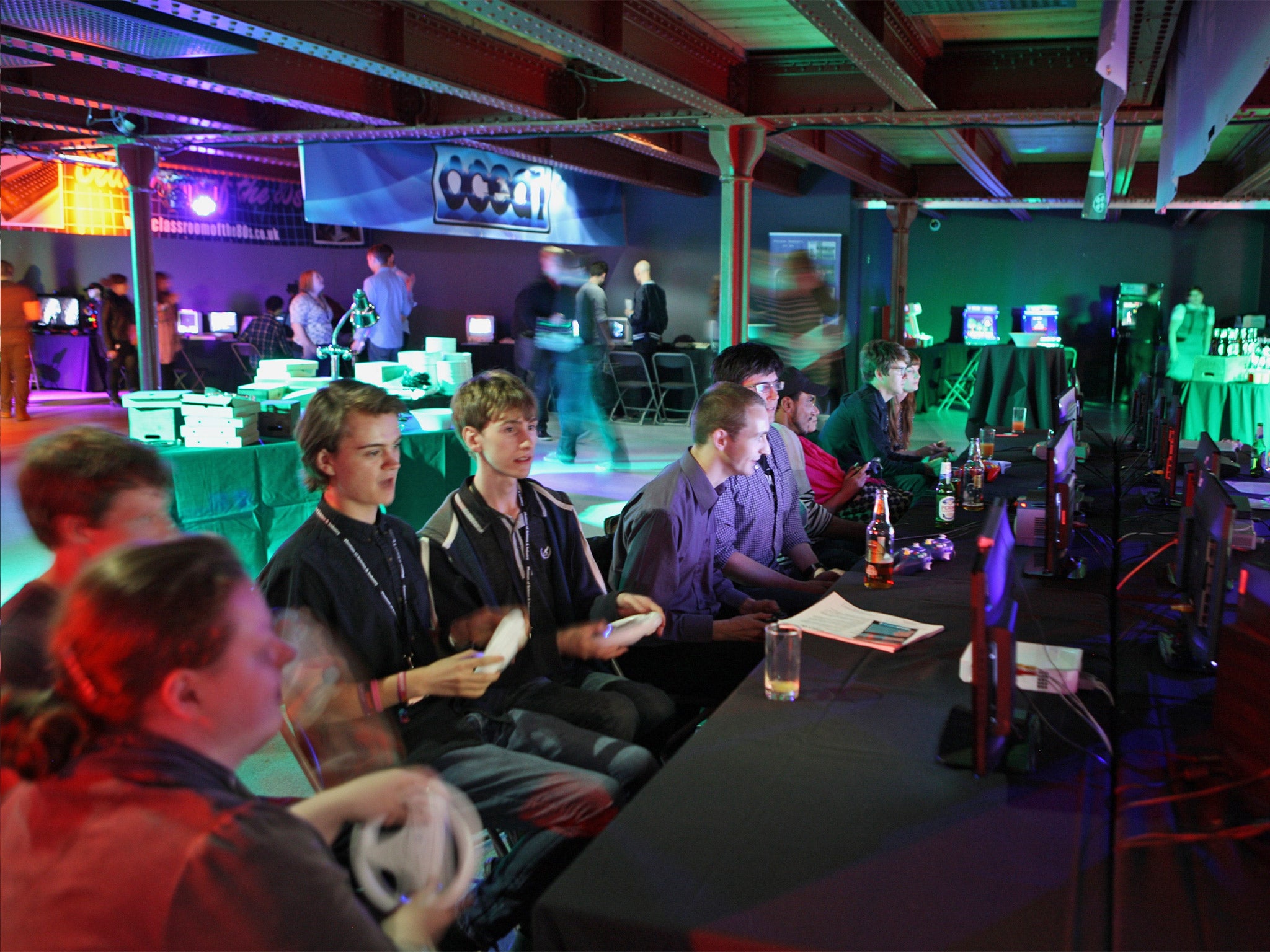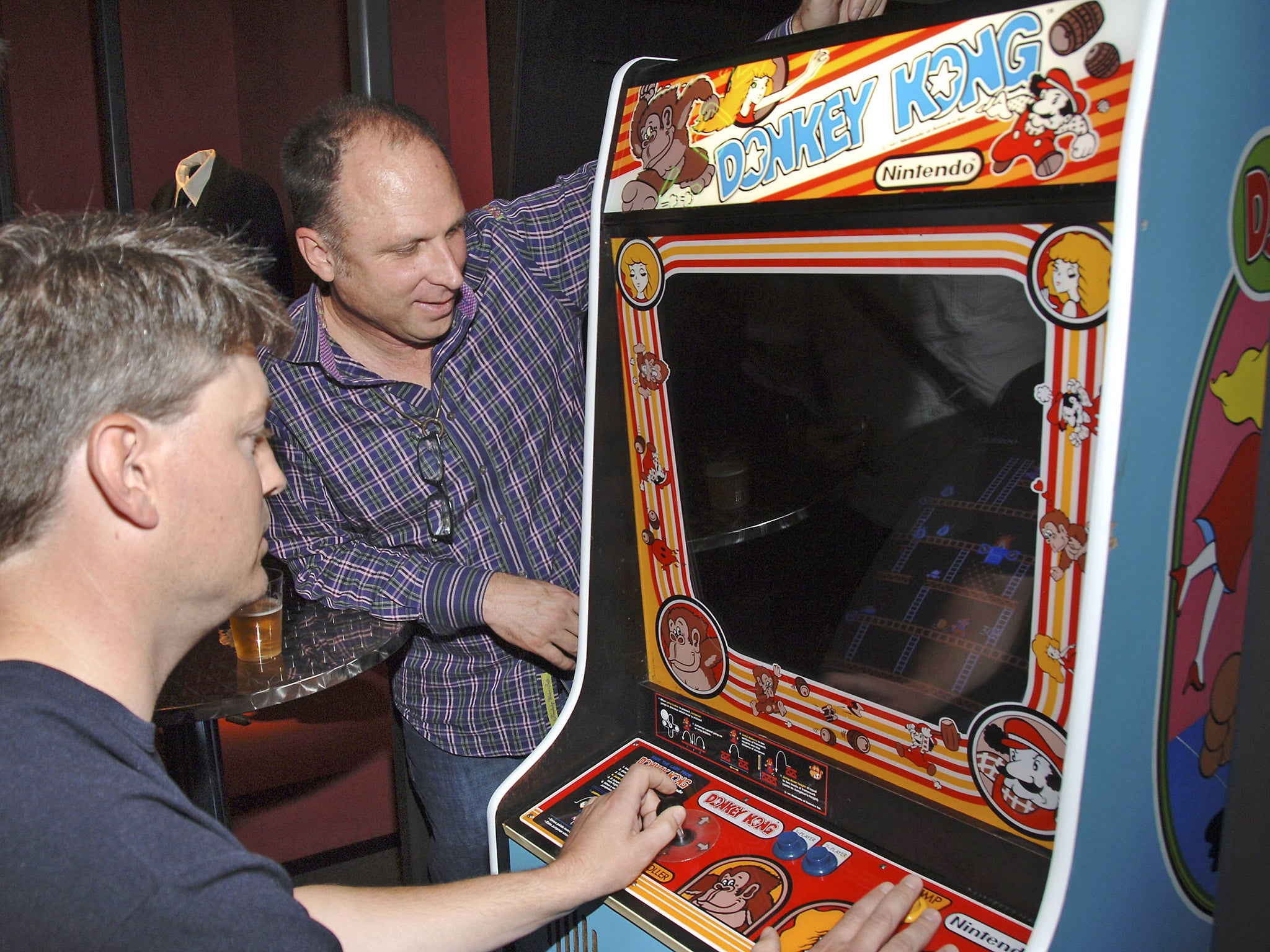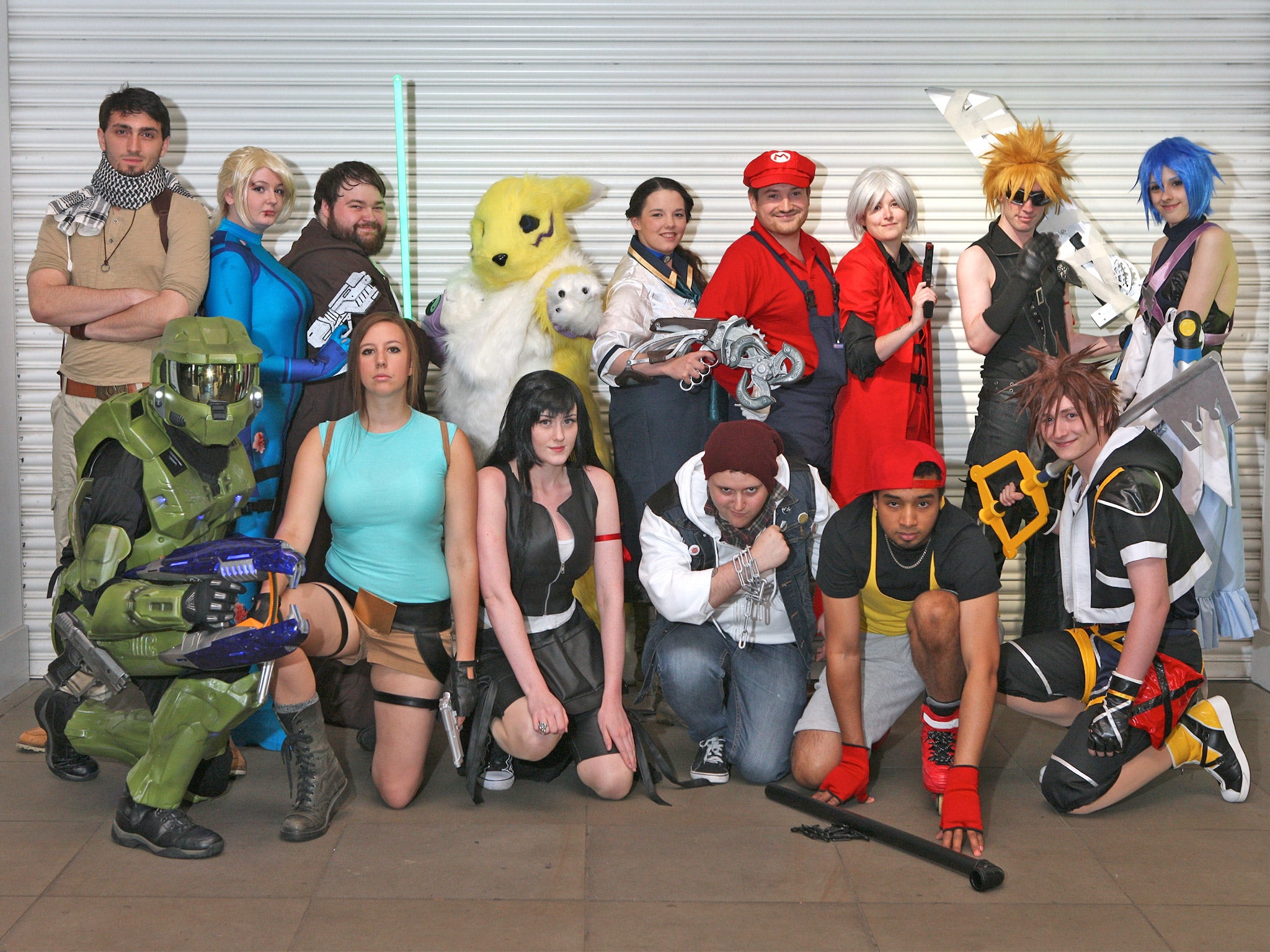Could the golden age of arcade gaming ever be revived in the Xbox era?
The days when coin-ops were the only way to play the latest video games are gone. But a small band of enthusiasts are keeping the button-pushing dream alive

The premise of Pixels, the Adam Sandler family-friendly flick clogging up cinema screens across the country this summer is that arcade games have sparked an intergalactic war. Having misinterpreted footage of Pac-Man, Donkey Kong and co as a military threat, aliens hit back at Earth with killer versions of the 1980s arcade heroes. Who can save the day against a scaled-up swarm of Space Invaders? A crack team of former arcade button-bashers.
Of course, in real life, the arcades of the 1970s and 1980s were filled with sweaty young lads concentrating hard on gaining a high score and value for money from their 10p pieces rather than world-saving Hollywood funnymen. But arcades were incredibly popular, gracing almost every high street and seafront. With US revenues alone reaching $7bn and British arcades attracting huge numbers of visitors, they offered a social gaming experience that was galaxies away from what could be played at home.
Between 1978 and 1986, arcades enjoyed a golden age thanks to machines loaded with Space Invaders, Galaxian, Defender, Asteroids, Rally-X and Pole Position. From the introduction of a plumber in Donkey Kong who later evolved into Nintendo mascot Mario to the pioneering use of cel-animated video within Dragon's Lair, history was being made.
Pac-Man became the most successful arcade title with 293,822 machines built and installed following its debut in 1981. Street Fighter II went on to revolutionise competitive play in 1991 and Virtual Racer proved a groundbreaking 3-D driving title a year later.
"The arcades were part of an era when technology was just becoming interesting and new things were happening," says Blackpool-born Andy Brown, director of Replay Events, a company which stages numerous gaming shows every year. "It was a magical time and I spent most of my summer holidays hanging around in arcades. I miss them," he adds.

No wonder. Today, few dedicated UK arcades exist following a shift in the mid-to-late 1990s towards playing at home. In the early days, many games debuted in the arcades and found their way on to home computers and consoles. But they seldom matched the quality of the originals. "The home gaming industry was very much in its infancy and rudimentary whereas the arcade machines were powerful and colourful," Brown says. "You couldn't bring something like them into your home because home machines weren't up to the task."
The arcades offered three things: cutting-edge graphics, a social experience and different ways to play. Paperboy let you steer using a handlebar, for instance, driving games had foot pedals, and many arcade machines had hydraulics that moved players according to the on-screen action. But then in 1994 came the PlayStation, followed by the Dreamcast and then the Xbox. These consoles began to match the cutting-edge visuals and gameplay of the arcades. Peripherals also came thick and fast for home machines bringing with them steering wheels, guitars, dance mats, light guns, fishing rods as well as chainsaw controllers, "power gloves" and maracas. Worse for arcade-owners' fortunes was when the games industry embraced online play and it became possible to be social without leaving the sofa. Arcades continued to rely on hardware-heavy experiences that were difficult to replicate at home, but one by one they began to close.
SegaWorld shut its UK arcades including its flagship Trocadero offering in London's Piccadilly Circus. Seaside amusements began relying more heavily on 2p machines and claw cranes. But while British arcades were facing a bleak future, the situation in Japan was different. There, companies such as Sega and Namco continue to make arcade machines and even port (convert) console games to arcades. "Japanese arcade games have consistently cost ¥100 (51p) for the past 30 or so years," says the author John Szczepaniak, who spent three months in Japan researching his book, The Untold History of Japanese Game Developers.

"They're hanging in there, weathering changes in how we consume media," adds Brian Ashcraft, senior editor of gaming website Kotaku in Japan and author of Arcade Mania: The Turbo-charged World of Japan's Game Centres. It helps that many arcades are located in urban areas, often near train stations. "Customers pop in during a date or while out with friends or even on the way home. There is a strong infrastructure in Japan that supports the existence of arcades," Ashcraft says. Japan's game developers still own their arcades and use them to showcase their latest titles.
In the UK, this exists to a smaller degree. There are Namco Funscapes arcades in various locations including the County Hall in London, the Trafford Centre in Manchester and the Metrocentre in Gateshead that continue to refresh their games. Brighton Pier has two amusement arcades and one of them was the first to introduce the subsequently best-selling Guitar Hero title to the UK.
Industry veteran Mark Starkey even runs a dedicated arcade on an industrial estate in Acton, west London, called The Heart of Gaming, but typically these days, arcades mix gaming with other pursuits. The Funscapes include bowling and, in Blackpool, Coral Island's machines nestle amid a casino, rides, bingo and fast-food outlets. "The majority of our customers come for the bowling and use the arcade areas either before or after they have bowled," says Kevin White, contract manager of Tenpin, one of many bowling alleys that have tagged-on arcade sections. "We see fewer standalone arcades as they are expensive to set up and run and they require experienced management.
Yet interest in arcades remains. Games developer Archer Maclean owns a large collection of vintage cabinets. UKVAC.com is a forum of UK arcade collectors and members even make their own working cabinets, some powered via a £30 Raspberry Pi computer.
What we've seen is an evolution of the concept of arcades. The National Videogame Arcade in Nottingham has some coin-operated cabinets but focuses on gaming principles introduced through impressive artistic-led installations. People also gather to play at a growing number of events including Insomnia in Coventry this month and the EGX at the NEC in Birmingham in September.

Interestingly, some events put the consoles that displaced arcades at their heart while presenting them within an arcade-like setting. This was evident at Replay Events' Play Blackpool which ran in May (and travels to Margate tomorrow). Play It at the Museum of Science and Industry in Manchester earlier this month actually shoved arcade cabinets to the corner of the room, putting home computers and consoles at the forefront. Home consoles and arcade machines will sit side-by-side at the Play Expo, also in Manchester, in October.
It seems that offering temporary, touring "arcades" is financially viable, encouraging nostalgia and curiosity among visitors. Dedicated arcades fare less well: the charming Arcade Barn in Exeter, "the UK's No 1 retro arcade", closed in January 2012, citing the pressure of costs.
But why leave home to play machines bettered by recent technology? "People miss the social aspect of gaming," Brown explains. "Our events get people together with their mates and while we didn't set out to recreate arcades, that is, in part, what we are doing."
It seems to be working. Many turn up to these events dressed as their favourite gaming characters. Families also attend. It could not be further removed from the image of an arcade being filled with youths furiously trying to better each other's scores in smoke-filled rooms.
"Families dress as Street Fighter characters and we see families playing four-player on Mario Kart," says Brown. "All you need is the right environment. Arcades can still work – if approached in the right way."
Play Margate takes place from tomorrow until Sunday (playmargate.com)
Join our commenting forum
Join thought-provoking conversations, follow other Independent readers and see their replies
0Comments